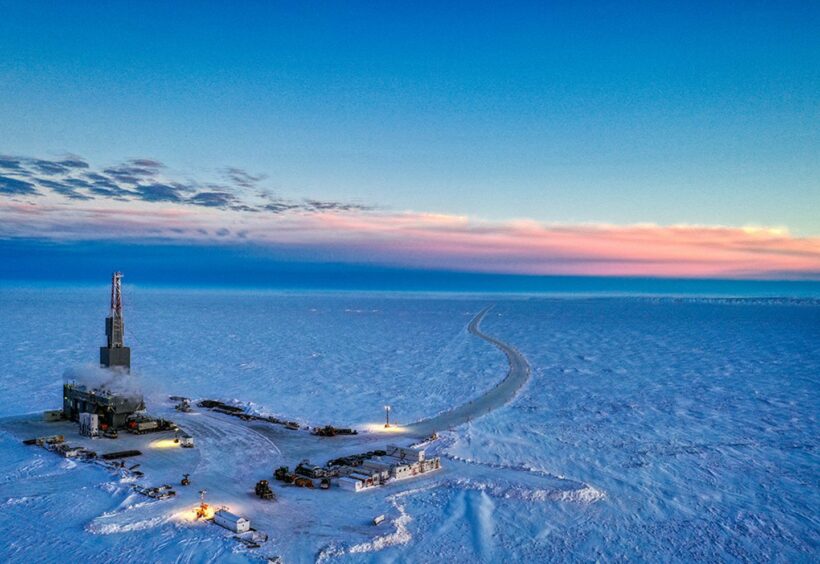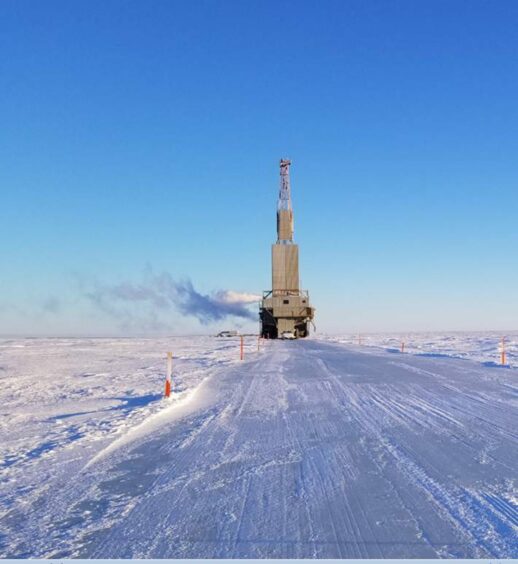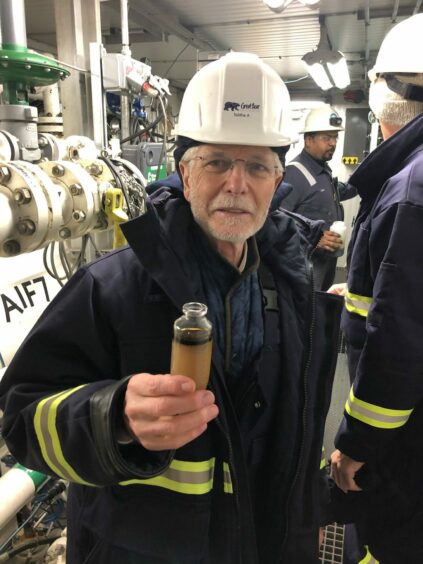
Pantheon Resources has a multi-billion barrel resource in the occasionally iced over state of Alaska, the company reckons. It will put the theory to the test this summer.
“We’ll drill the first producing well in July,” Pantheon CEO Jay Cheatham said.
The company will drill the well close to the Trans-Alaska Pipeline System (TAPS) network, on a gravel corridor. It will truck oil to pump station 1.
Proximity to the pipeline will help the company start producing. Drilling onshore in Alaska’s North Slope often has to contend with working on ice, which reduces the work window and poses certain logistical challenges.
“That’s an advantage for us. We can sell oil more quickly and it will give us better knowledge of the reservoir. We really have to watch the decline curve, we need to see how fast the wells come off the initial production peak,” Cheatham continued.
Assuming all goes to plan, Pantheon could start selling oil from its Alkaid 2 well in the autumn of this year. The well will appraise the Alkaid 1 discovery with a horizontal leg.
“We will go gingerly and learn at Alkaid 2,” Cheatham said. “We’ll get a lot of data and learn a lot. We may change the process. We had been thinking about 250 feet per frack stage, but we may drop that down.”
Big freeze
Then, in the winter, Pantheon is planning to inexpensive re-entries. It will also try two new test wells.
The prize at the heart of the company’s plans could be substantial. According to a recent resource assessment, it could have 23.5 billion barrels of oil in place. The bulk of this, at 17.8bn barrels, is in the Lower Basin Floor Fan. Given the nature of the resource, a mix of sands and shales, the company is working on a 10% recovery factor.
By the summer of 2023, Pantheon could have “serious production”, Cheatham said. Ideally, the company would twin the Alkaid 2 and have five wells producing.
At this point, it production could be 5,000-6,000 barrels per day, the executive said. “That gives us credibility and cashflow – and it proves the reservoirs.”
Citing research from Halliburton, Cheatham said the Alkaid wells – with a 10,000 foot lateral – might produce 1,000-1,200 bpd each. Each well, he said, would have an estimated ultimate recovery of 2.25 million barrels/
There have been challenges in the past. Pantheon’s predecessor Great Bear Petroleum drilled the original Alkaid 1 in 2016. A flood on the Sag River forced the company to suspend operations. The highway has now been raised.
Logistics will continue to be a challenge. Pantheon, for the time being, has been forced to import sand for its wells from Canada. Each well will require around 10-12 million pounds of sand. Scaling up drilling will bring new pressures to the supply chain.
Pantheon is in talks for more local sand supplies. In the winter drilling season, everything imported to camps will also have to be taken out – including water, food, waste and drill cuttings. In addition, the company will need to keep the frack fluid warm.
Given these challenges, the appeal of drilling the Alkaid 2 in summer, on a gravel base, is clear.
Juggling the numbers
“At $80 per barrel of oil, that gives a netback of $64, from a well that we believe will cost around $13 million. Operating costs would be around $5 per barrel, certainly not more than $10,” he continued.
As drilling expands, these costs should fall further, Cheatham predicted. “It’s hugely economic, even at much lower prices.”
A full field development might include something like 85,000 bpd from the shallow resource and another 30,000 bpd from the deeper areas.
Pantheon has had some success in raising cash, securing $96mn in December 2021. That said, it has struggled to find a partner. It neared a deal last year but this fell apart at the last moment with the potential partner changing its offer at the last moment.
As at the end of March, the company had about $72mn. The summer programme will cost $23mn, with G&A costs of $4-5mn per year.
“We can probably squeeze out the winter programme but then it would get skinny. We need to find a partner or raise some additional financing.”
“Big industry doesn’t believe us. We have to prove it. This summer will help that. If they’re still not seeing what we’re doing, summer 2023 will prove the concept. That should be enough to convince anyone – if they come in like we think they will.”
Down the line
There are two other onshore developments in Alaska trying to make progress. Oil Search’s Pikka-Horseshoe and ConocoPhillips’ Willow.
Cheatham was confident Pantheon had the advantage. “We’re years ahead of Pikka-Horseshoe and Willow. They’re going to need four or five years to reach first oil, it could be longer, they’re both working in sensitive areas. We are lucky we are 100% in state lands.”
One area of strength is support from the state. Alaska is largely reliant on the energy sector and is eager to sustain production.
The executive said Pantheon had considered a US listing. In fact, that the discussions last year with the potential partner would have involved such a step as part of a three stage buy in. “We’re looking very hard” at ways to enter the US market, Cheatham said.
Local links
Furthermore, throughput via TAPS is declining. There is a point at which there will be insufficient oil to flow via the link. While there would be various options to solving this, the most preferable would be to add more production.
Cheatham was at Arco when it was working on the TAPS and Prudhoe Bay projects. “TAPS is looking for new oil and it’s open access. It’s a $4.5 per barrel tariff. Even if that goes up 10-20% – and I don’t think it will – our oil would be the highest quality oil in the pipe.”
The Pantheon boss noted, though, the importance of minimising the company’s footprint and emissions. “The ultimate goal is effectively zero emissions, when we reach full-field development.”
The company would produce oil, separate it and reinject water. Gas from the reservoirs would go into generating power and providing gas lift. Excess gas would also be reinjected.
Pantheon clearly has an opportunity to start producing, but growth will rely on its ability to secure more cash. At a point when oil prices are high, with the state, federal government and market calling for more production, the company looks well placed to capitalise.
Updated on May 10 to correct date of equity raising.

 © Supplied by Pantheon Resources
© Supplied by Pantheon Resources © Supplied by Pantheon Resources
© Supplied by Pantheon Resources